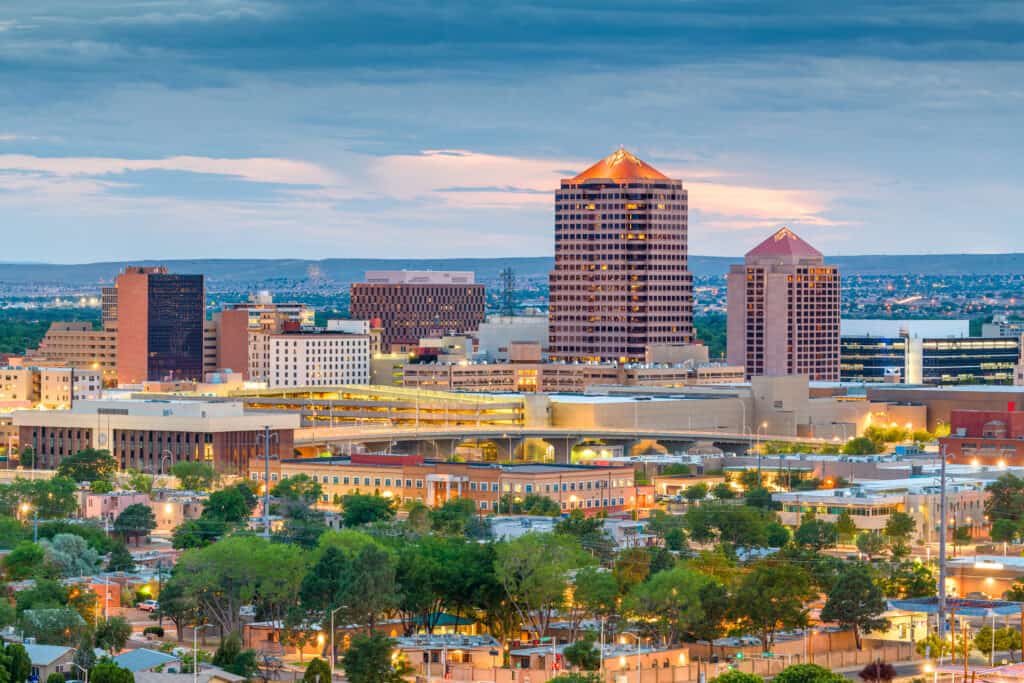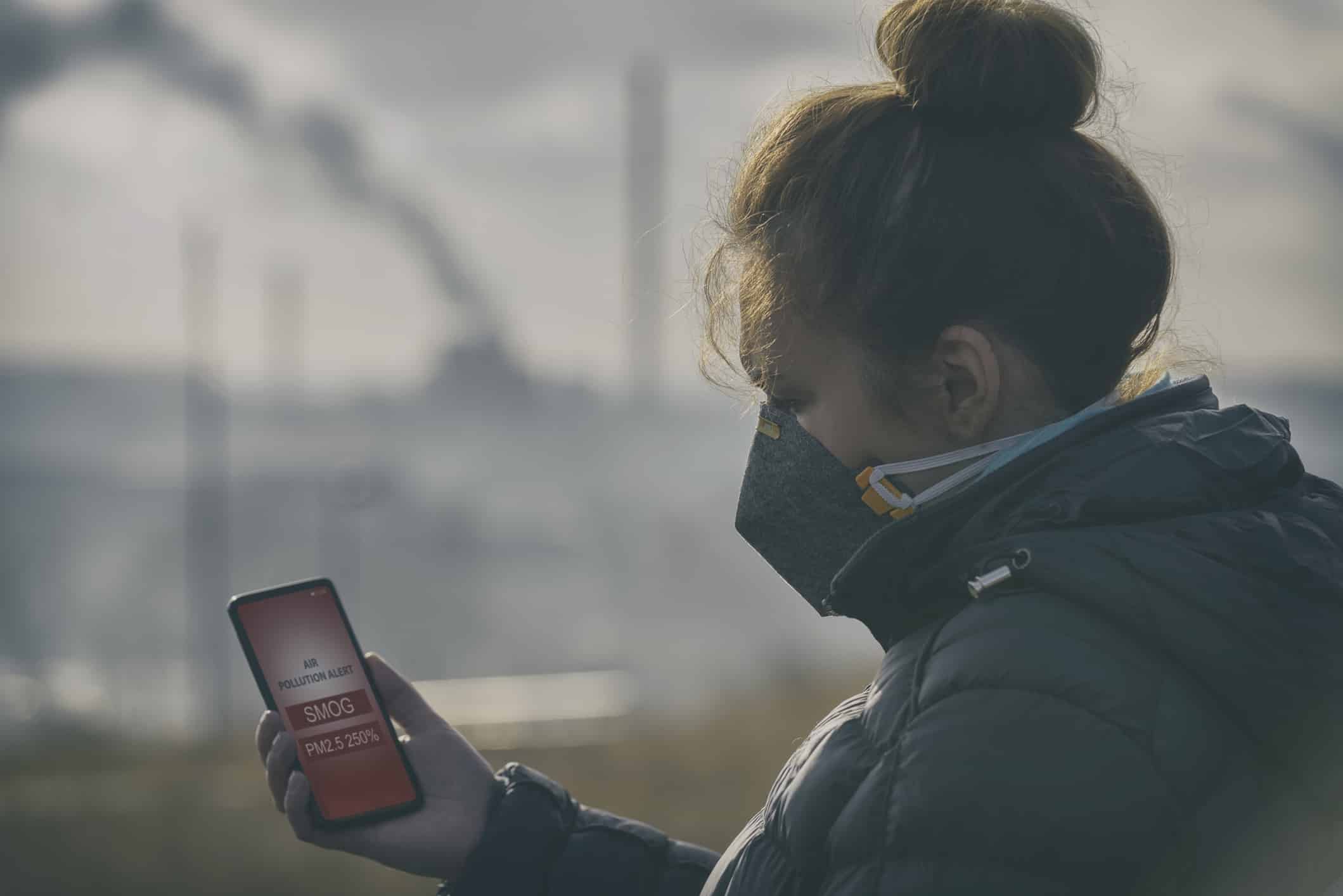New Mexico in the Southwest region of the United States is the country’s fifth-largest state. In 2023, New Mexico emerged as one of the ‘Most Polluted Places to Live‘ in a list published by the American Lung Association. Thanks to the oil and gas fields that litter the state, New Mexico has been living with excessive pollution for almost a decade now. According to the Environmental Defense Fund (EDF), New Mexico’s oil and gas companies emit as much as 1.1 million metric tons of methane annually.
The untamed release of methane is one of the main causes for the rise in global temperatures. Apart from the oil and gas operations in the state, smoke from wildfires and wind-blown dust are two other major offenders responsible for fine particulate pollution in New Mexico. The most polluted county in the state is Bernalillo, according to a ranking by Swiss air purifier company, IQAir. Within Bernalillo County, Albuquerque has gained notoriety as one of the dirtiest cities in the state. In this article, we will find out how Albuquerque earned this unfortunate distinction as one of the dirtiest cities in New Mexico.
Why is Albuquerque so Polluted?

Driven by factors such as emissions from automobiles, industrial activities, and other local sources, the city of Albuquerque contends with very high pollution levels.
©Sean Pavone/Shutterstock.com
Albuquerque is the largest city in the state of New Mexico. Founded in 1706 as a farming and shepherding community, the city today serves as the main industrial hub of the state. From advanced technology companies like the Intel Corporation and Sandia National Laboratories to the University of New Mexico and the Kirkland Air Force Base, the city is home to many big companies and top employers.
Albuquerque currently faces a significant pollution challenge driven by various factors. The city’s industrial landscape, including factories, power plants, and oil refineries has impacted the city’s air quality. The city also experiences high levels of pollution due to emissions from automobiles and airplanes. Smoke from wood burning and dust blown by the wind are other substantial contributors to particulate matter.
According to data published by Stacker, the average concentration of coarse particulate matter (PM10) in Albuquerque is around 52 μg/m^3. This exceeds the EPA standards by 47.3 percent. The average fine particulate matter (PM2.5) concentration, on the other hand is approximately 11.3 μg/m^3. While this is 5.8 percent below EPA standards, it still contributes to overall air quality concerns. In short, the city’s air quality is a significant concern, and efforts to address and mitigate pollution sources are crucial for improving environmental conditions and public health.
The Impact of Fine and Coarse Particulate Matter in the Air
Elevated levels of particulate matter do not just contribute to poor air quality and reduced visibility but also has several other environmental and health impacts. Exposure to fine particles, particularly pose great health risks. Fine particles can get deep into the lungs and even into a person’s blood stream. According to the American Lung Association, this puts a person at an increased risk for respiratory disease, cardiovascular disease, and even lung cancer. Coarse particulate matter, on the other hand, may not be as dangerous, But it can still trigger irritation in the eyes, throat, and nose of a person and lead to respiratory problems such as asthma, bronchitis, and aggravated allergies. Additionally, the deposition of particles on water and soil can harm ecosystems, affecting plant growth and animal and aquatic life.
What is Being Done to Improve Albuquerque’s ‘Dirtiest City’ Image

Albuquerque employs a multi-pronged approach to actively address its air quality challenges.
©BLACKDAY/Shutterstock.com
In an effort to improve air quality and address air pollution in the city of Albuquerque, various measures and initiatives are being introduced. Due to the poor air quality in the city, New Mexico enacted the ‘Clean Car Rule‘ in July 2022. This rule targets the elimination of 130,000 tons of greenhouse gas emissions and over 1,700 tons of ozone-forming pollutants by 2050. Authorities are also directing efforts towards promoting alternative transportation such as walking, carpooling, and bicycling to actively reduce associated emissions.
Apart from this, the government has set up five EPA-certified Ambient Air Monitoring Stations across the Albuquerque-Bernalillo county. These monitoring stations across the county actively monitor hourly average concentrations of criteria pollutants at sites with the most significant air quality challenges. Additionally, the air quality program in New Mexico has also invested in an innovative mobile air quality monitoring trailer to protect public health. Deploying this monitoring trailer has helped to actively collect localized air quality data in various neighborhoods and aid in identifying specific air pollutants.
Woodburning has been a major cause for low visibility in the city during wintertime. A ‘NO-BURN’ program was initiated in the year 1985 on a voluntary basis to combat this problem. The program runs from October through February and has improved wintertime visibility and has also reduced CO levels in recent years.
Thank you for reading! Have some feedback for us? Contact the AZ Animals editorial team.








